Operation Crossroads, nuclear weapons tests, 1946
Operation Crossroads
Operation Crossroads was a pair of nuclear weapon tests conducted by the United States at Bikini Atoll in mid-1946. They were the first nuclear weapon tests since Trinity on July 16, 1945, and the first detonations of nuclear devices since the atomic bombing of Nagasaki on 9 August 1945. The purpose of the tests was to investigate the effect of nuclear weapons on warships. The series consisted of two detonations, each with a yield of 21 kilotons: ABLE detonated at an altitude of 520 feet (158 m) on 1 July 1946; BAKER detonated 90 feet (27 m) underwater on 25 July 1946.
The Crossroads tests were the first of many nuclear tests held in the Marshall Islands and the first to be publicly announced beforehand and observed by an invited audience, including a large press corps. They were conducted by Joint Army/Navy Task Force One, headed by Vice Admiral William H. P. Blandy rather than by the Manhattan Project, which had developed nuclear weapons during World War II. A fleet of 95 target ships was assembled in Bikini Lagoon and hit with two detonations of Fat Man plutonium implosion-type nuclear weapons of the kind dropped on Nagasaki in 1945, each with a yield of 23 kilotons of TNT.
The first test was Able. The bomb was named Gilda after Rita Hayworth's character in the 1946 film Gilda and was dropped from the B-29 Superfortress Dave's Dream of the 509th Bombardment Group on 1 July 1946. It detonated 520 feet (158 m) above the target fleet and caused less than the expected amount of ship damage because it missed its aim point by 2,130 feet (649 m).
The second test was Baker. The bomb was known as Helen of Bikini and was detonated 90 feet (27 m) underwater on 25 July 1946. Radioactive sea spray caused extensive contamination. A third deep-water test named Charlie was planned for 1947 but was canceled primarily because of the United States Navy's inability to decontaminate the target ships after the Baker test. Ultimately, only nine target ships were able to be scrapped rather than scuttled. Charlie was rescheduled as Operation Wigwam, a deep-water shot conducted in 1955 off the coast of Mexico (Baja California).
Bikini's native residents were evacuated from the island on board the LST-861, with most moving to the Rongerik Atoll. In the 1950s, a series of large thermonuclear tests rendered Bikini unfit for subsistence farming and fishing because of radioactive contamination. Bikini remains uninhabited, though it is occasionally visited by sport divers.
Planners attempted to protect participants in the Operation Crossroads tests against radiation sickness, but one study showed that the life expectancy of participants was reduced by an average of three months. The Baker test's radioactive contamination of all the target ships was the first case of immediate, concentrated radioactive fallout from a nuclear explosion. Chemist Glenn T. Seaborg, the longest-serving chairman of the Atomic Energy Commission, called Baker "the world's first nuclear disaster." (Wikipedia)
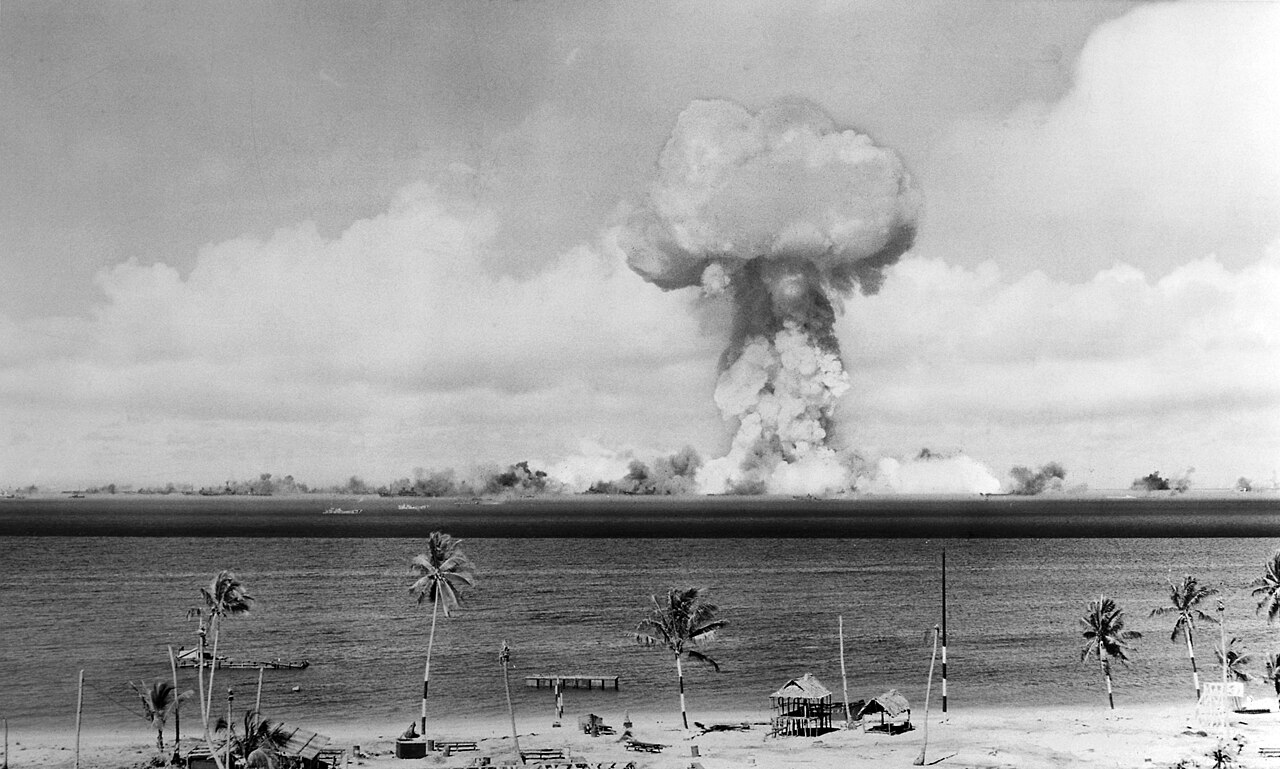
(USN Photo)
Able, atomic bomb detonated in 1946 by the US Army as part of Operation Crossroads.
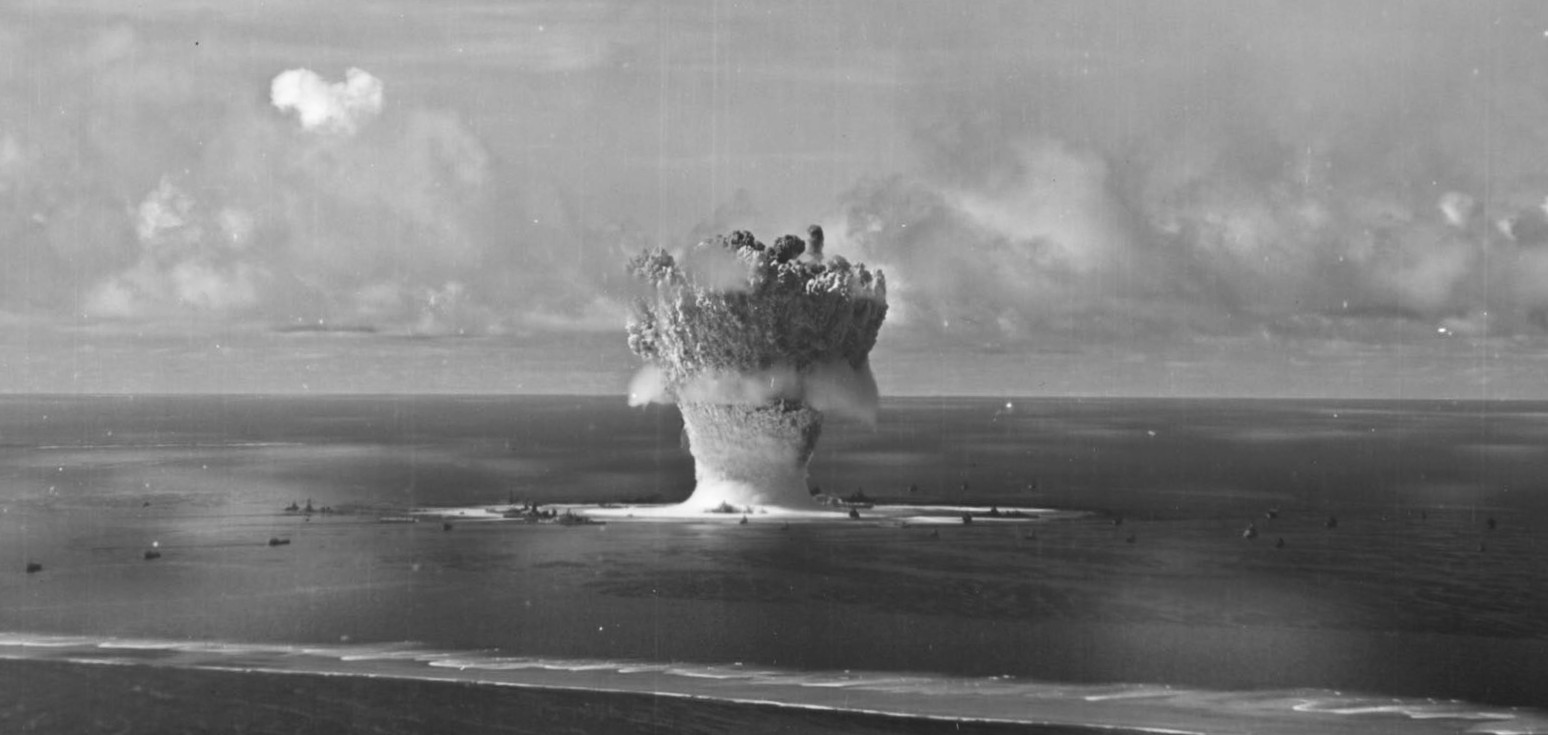
(USN Photo)
Aerial view of the "Baker" explosion, part of Operation Crossroads, a nuclear weapon test by the United States military at Bikini Atoll, Micronesia, on 25 July 1946.
.webp)
(USN Photo)
Aerial view from a U.S. Navy Martin PBM Mariner (callsign "U") of the Crossroads Baker atomic test, less than one second after the detonation. Identifiable ships are (l-r): USS Pensacola (CA-24), USS Saratoga (CV-3), USS Pennsylvania (BB-38), the former Japanese battleship Nagato, USS New York (BB-34), and USS Salt Lake City (CA-25).
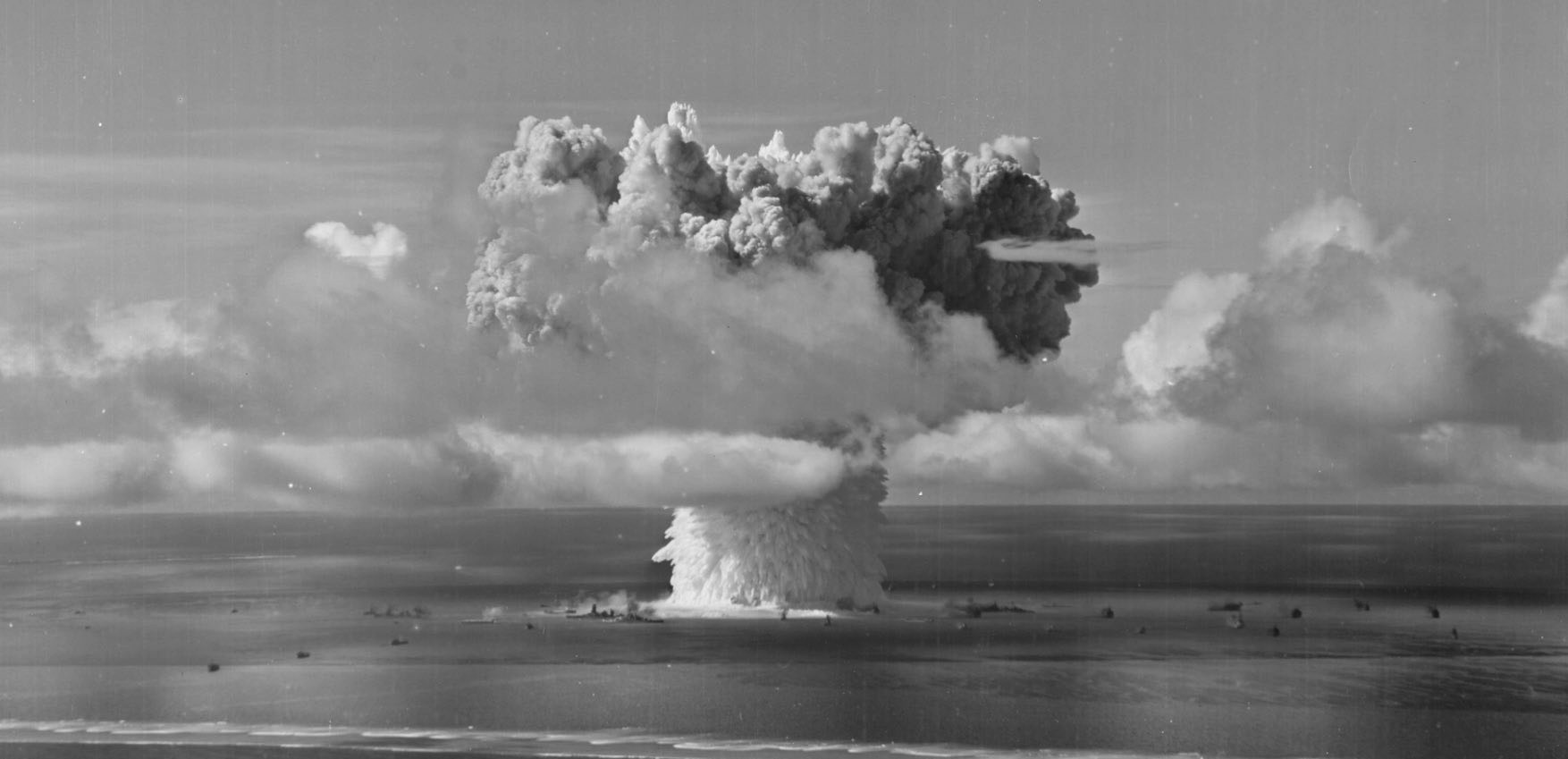
(USN Photo)
Aerial view of the "Baker" explosion, part of Operation Crossroads, a nuclear weapon test by the United States military at Bikini Atoll, Micronesia, on 25 July 1946.
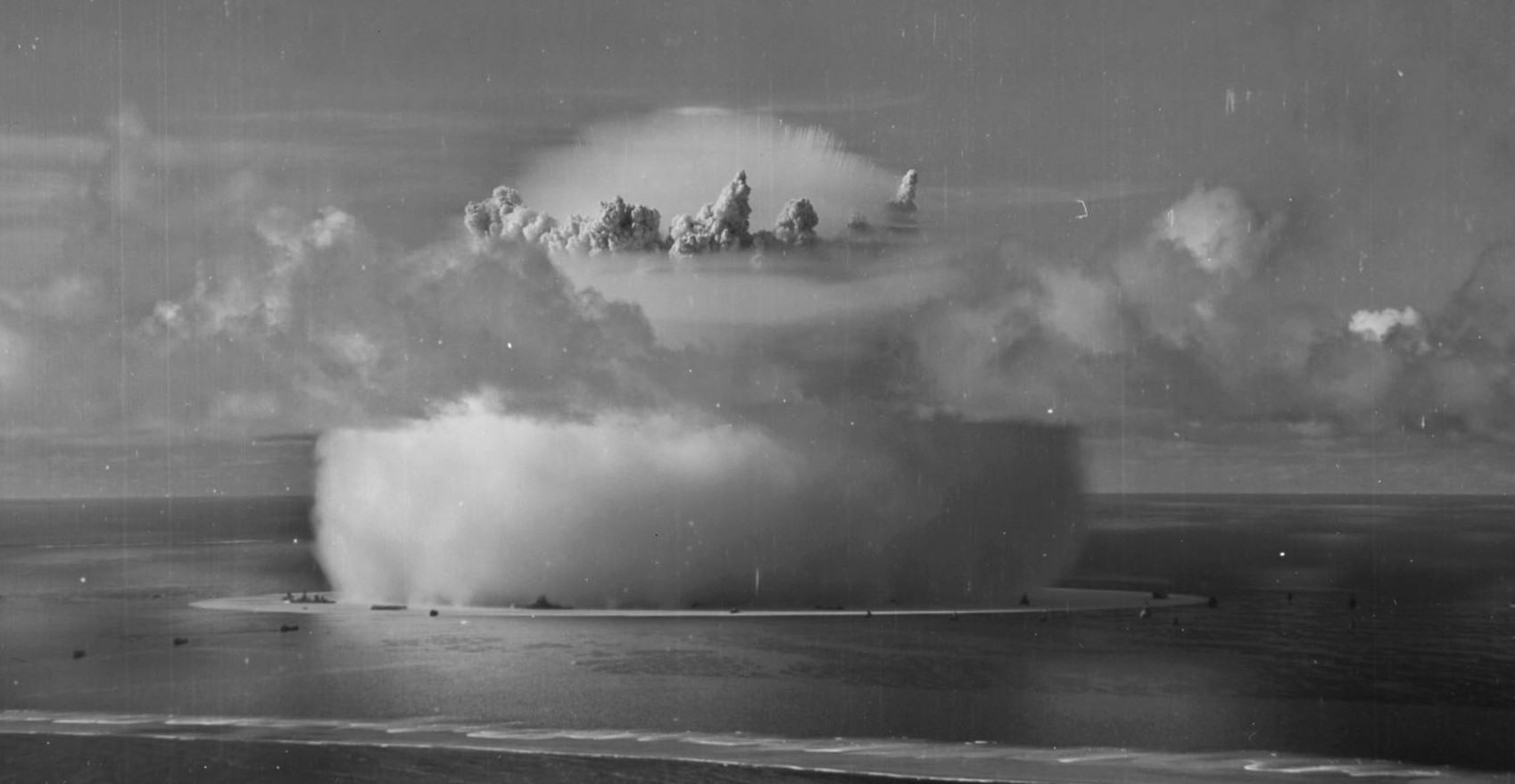
(USN Photo)
Aerial view of the "Baker" explosion, part of Operation Crossroads, a nuclear weapon test by the United States military at Bikini Atoll, Micronesia, on 25 July 1946.

(U.S. Army Photographic Signal Corps Photo)
A 21 kiloton underwater nuclear weapons effects test, known as Operation Crossroads, Event Baker, showing the white surface "crack" under the ships, and the top of the hollow spray column protruding through the hemispherical Wilson cloud. Bikini Island beach is in the background. 25 July 1946.
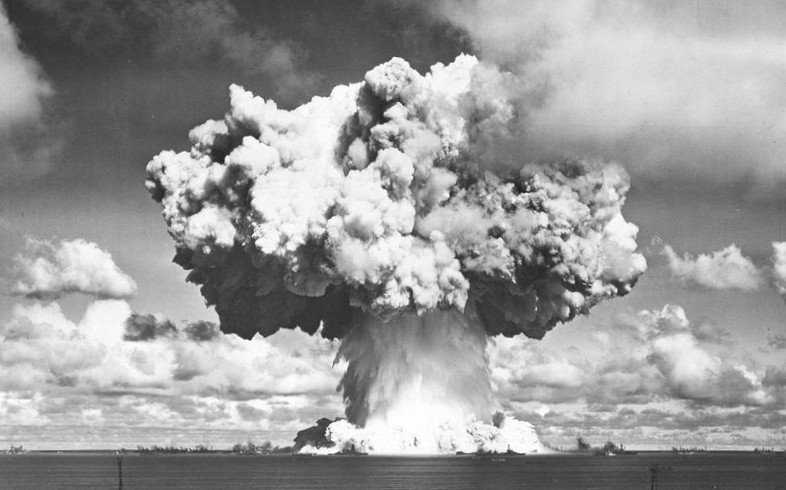
(U.S. Army Photo)
Operation Crossroads, Event Baker shot, Bikinie Atoll, 1946. The Wilson cloud has evaporated revealing the cauliflower atop the spray column. Two million tons of water spray fall back into the lagoon. The radioactive base surge is moving toward the ships.
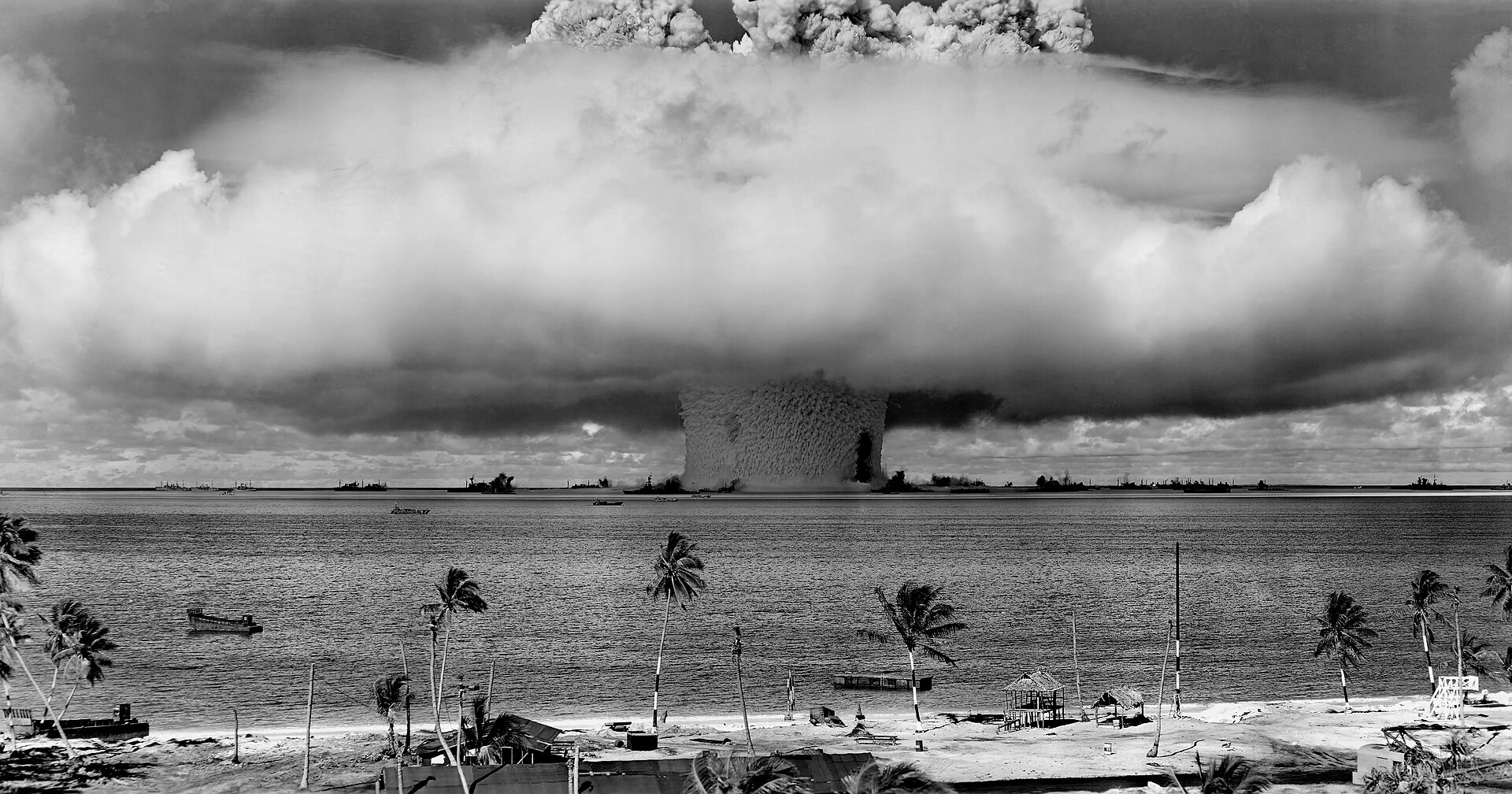
(USN Photo)
The "Baker" explosion, part of Operation Crossroads, a nuclear weapon test by the United States military at Bikini Atoll, Micronesia, on 25 July 1946. The wider, exterior cloud is actually just a condensation cloud caused by the Wilson chamber effect, and was very brief. There was no classic mushroom cloud rising to the stratosphere, but inside the condensation cloud the top of the water geyser formed a mushroom-like head called the cauliflower, which fell back into the lagoon (compare with this image, a photo taken slightly later, after the condensation cloud had cleared). The water released by the explosion was highly radioactive and contaminated many of the ships that were set up near it. Some were otherwise undamaged and sent to Hunter's Point in San Francisco, California, United States, for decontamination. Those which could not be decontaminated were sunk a number of miles off the coast of San Francisco.
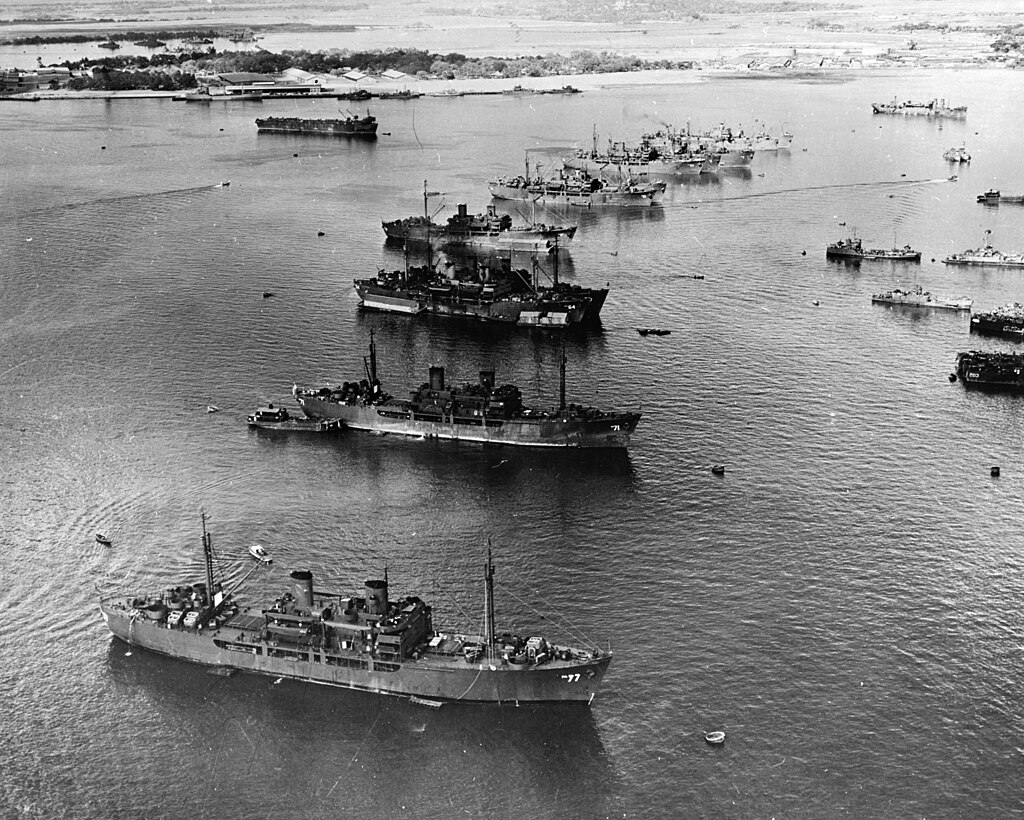
(USN Photo)
Operation Crossroads, 1946: Prospective target ships and support ships at Pearl Harbor, Hawaii (USA), in a photo released on 27 February 1946. Ships present from front to rear include the Gilliam-class attack transports USS Crittenden (APA-77), USS Catron (APA-71), USS Bracken (APA-64), USS Burleson (APA-67), USS Gilliam (APA-57), USS Fallon (APA-81), one unidentified ship, USS Fillmore (APA-83), the Acubens-class general stores issue ships USS Kochab (AKS-6) and Luna (AKS-7), an unidentified tanker and a Liberty ship. Identifiable on the right are the medium landing ships LSM-203 and LSM-465. Further in the background are a floating drydock and a merchant ship hulk with unidentified fittings forward of the bridge.
.jpg)
(U.S. Defense Atomic Support Agency Photo)
View of the target fleet before the "Crossroads Able" nuclear test, in June 1946. The battleship USS Nevada (BB-36) in the center was painted bright orange as an aming point, although the bomb later exploded 710 yards (649 m) aft of Nevada. The reason was never identified. The only major ship not visible is the former German heavy cruiser Prinz Eugen, anchored off to the lower right. The ship visible in the right foreground is the amphibious command ship USS Mount McKinley (AGC-7), flagship for "Operation Crossroads", flying the flag of Admiral William H.P. Blandy. She later steamed out of the target area.
Able and Baker are the first two letters of the Joint Army/Navy Phonetic Alphabet, used from 1941 until 1956. Alfa and Bravo are their counterparts in the current NATO phonetic alphabet. Charlie is the third letter in both systems. According to eyewitness accounts, the time of detonation for each test was announced as H or How hour; in the official JTF-1 history, the term M or Mike hour is used instead.
There were only seven nuclear bombs in existence in July 1946.[50] The two bombs used in the test were Fat Man plutonium implosion-type nuclear weapons of the kind dropped on Nagasaki. The Able bomb was stenciled with the name Gilda and decorated with an Esquire magazine photograph of Rita Hayworth, star of the 1946 movie, Gilda. The Baker bomb was Helen of Bikini. This femme-fatale theme for nuclear weapons, combining seduction and destruction, is epitomized by the use in all languages, starting in 1946, of "bikini" as the name for a woman's two-piece bathing suit.
A survey was conducted in mid-1947 to study long-term effects of the Operation Crossroads tests. According to the official report, decontamination efforts "revealed conclusively that removal of radioactive contamination of the type encountered in the target vessels in test Baker cannot be accomplished successfully."
U.S. resumed nuclear testing at Bikini in 1954. During 1954, 1956, and 1958, 21 more nuclear bombs were detonated at Bikini, yielding a total of 75 megatons of TNT (310 PJ), equivalent to more than 3,000 Baker bombs. Only one was an air burst, the 3.8 megaton Redwing Cherokee test. Air bursts distribute fallout in a large area, but surface bursts produce intense local fallout. The first after Crossroads was the dirtiest: the 15 megaton Bravo shot of Operation Castle on 1 March 1954, which was the largest-ever U.S. test. Fallout from Bravo caused radiation injury to Bikini islanders who were living on Rongelap Atoll.

